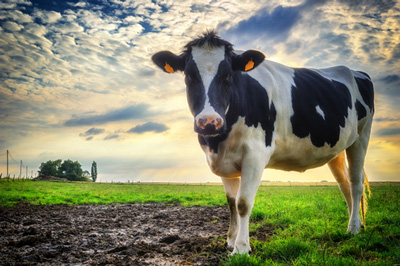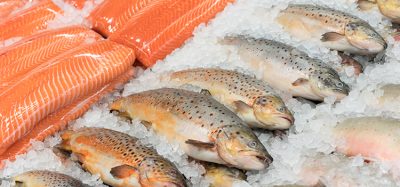Study identifies clear benefits of organic milk and meat
- Like
- Digg
- Del
- Tumblr
- VKontakte
- Buffer
- Love This
- Odnoklassniki
- Meneame
- Blogger
- Amazon
- Yahoo Mail
- Gmail
- AOL
- Newsvine
- HackerNews
- Evernote
- MySpace
- Mail.ru
- Viadeo
- Line
- Comments
- Yummly
- SMS
- Viber
- Telegram
- Subscribe
- Skype
- Facebook Messenger
- Kakao
- LiveJournal
- Yammer
- Edgar
- Fintel
- Mix
- Instapaper
- Copy Link
Posted: 16 February 2016 | Victoria White | No comments yet
An international team of experts has shown that both organic milk and meat contain around 50% more beneficial omega-3 fatty acids than conventionally produced products…


An international team of experts has shown that both organic milk and meat contain around 50% more beneficial omega-3 fatty acids than conventionally produced products.


Analysing data from around the world, the team reviewed 196 papers on milk and 67 papers on meat and found clear differences between organic and conventional milk and meat, especially in terms of fatty acid composition, and the concentrations of certain essential minerals and antioxidants.
The team say the data show a switch to organic meat and milk would go some way towards increasing our intake of nutritionally important fatty acids.
Chris Seal, Professor of Food and Human Nutrition at Newcastle University explains: “Omega-3s are linked to reductions in cardiovascular disease, improved neurological development and function, and better immune function.
“Western European diets are recognised as being too low in these fatty acids and the European Food Safety Authority (EFSA) recommends we should double our intake.
“But getting enough in our diet is difficult. Our study suggests that switching to organic would go some way towards improving intakes of these important nutrients.”
The systematic literature reviews analysed data from around the world and found that organic milk and meat have more desirable fat profiles than conventional milk and meat.
Most importantly, a switch from conventional to organic would raise omega-3 fat intake without increasing calories and undesirable saturated fat. For example, half a litre of organic full fat milk (or equivalent fat intakes from other dairy products like butter and cheese) provides an estimated 16% (39 mg) of the recommended, daily intake of very long-chain omega-3, while conventional milk provides 11% (25 mg).
Other positive changes in fat profiles included lower levels of myristic and palmitic acid in organic meat and a lower omega-3/omega-6 ratio in organic milk. Higher levels of fat soluble vitamins such as vitamin E and carotenoids and 40% more CLA in organic milk were also observed.
Desirable fat profiles closely linked to outdoor grazing
The study showed that the more desirable fat profiles in organic milk were closely linked to outdoor grazing and low concentrate feeding in dairy diets, as prescribed by organic farming standards.
The two new systematic literature reviews also describe recently published results from several mother and child cohort studies linking organic milk, dairy product and vegetable consumption to a reduced risk of certain diseases. This included reduced risks of eczema and hypospadias in babies and pre-eclampsia in mothers.
Newcastle University’s Professor Carlo Leifert, who led the studies, said: “People choose organic milk and meat for three main reasons: improved animal welfare, the positive impacts of organic farming on the environment, and the perceived health benefits. But much less is known about impacts on nutritional quality, hence the need for this study.
“Several of these differences stem from organic livestock production and are brought about by differences in production intensity, with outdoor-reared, grass-fed animals producing milk and meat that is consistently higher in desirable fatty acids such as the omega-3s, and lower in fatty acids that can promote heart disease and other chronic diseases.”
More iodine in conventional milk
The study also found 74% more iodine in conventional milk which is important information, especially for UK consumers, where iodized table salt is not widely available.
Iodine is low in most foods, except seafood, and the World Health Organisation (WHO) recommends Iodine fortification of table salt to address this. Iodine fortification of cattle feeds is also widely used to increase iodine concentrations in both organic and conventional milk.
In the USA, China, Brazil and many European countries, where Iodine fortified salt is widely used, elevated levels of iodine in milk may increase the risk of excessive intake for individuals with high dairy consumption. For this reason the European Food Safety Authority (EFSA) has proposed a reduction in the permitted level of iodine in cattle feed from 5 to 2 mg iodine per kg of feed.
However, in the UK, where iodized salt is not widely available, the population relies more on milk and dairy products for adequate iodine supply. National Diet and Nutrition Survey data (NDNS) suggest that milk and dairy products supply between 31-52% of iodine in the UK diet.
The daily recommended intake of iodine in the UK is 140 µg/day and just over half comes from dietary sources other than milk/dairy products. Based on results from the study, half a litre of milk would provide 53% of and 88% of the daily recommended intake from organic and conventional milk respectively. However, pregnant and breastfeeding women have a higher iodine requirement (250 µg/day) and are therefore more at risk of iodine deficiency, which could affect neurological development in babies.








